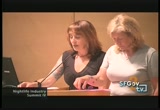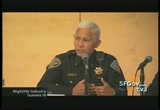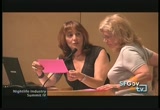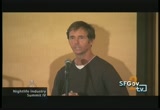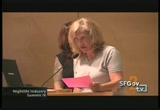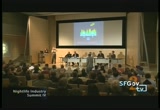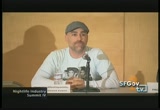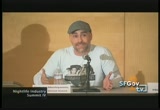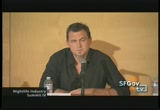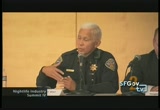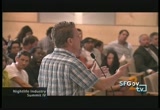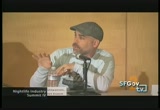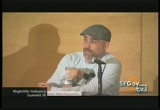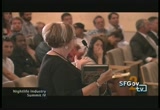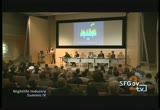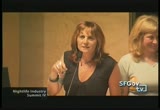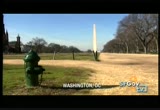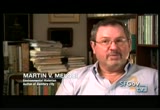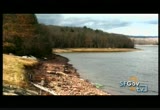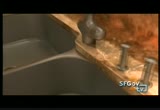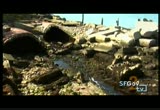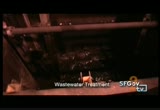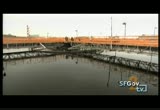tv [untitled] November 12, 2012 5:30am-6:00am PST
5:30 am
we need them in the city at 2:00 a.m.. from the entertainment commission side and a lot -- mayor's office, if i could grab his attention, this is a longstanding issue that is very important. >> of the next question is written in red ink, on pink paper. to the police, what is the official stand, or your opinion, on the expansion of last fall to 4:00 a.m. ? >> i will feel that one. it is not a case by case basis. we have to take into consideration, if you're going to have last call before 4:00 in the morning, the impact it will have on community and traffic,
5:31 am
the impact it will have on the people outside the venue, it has been case by case. i know that just about every venue once and after hours permit. we are trying to allow those as much as we can. we have been permitting them. however, with the stipulation to come back in six months 12 months to reevaluate. we are trying to keep those down to two days, three days per month. i know that they can get to that. it is just a matter of the impact that will be had on the community as a whole. it is not something we have had ever. wax jeff, i am going to ask
5:32 am
this. the cost of living in the city's going up. while san francisco still attracts many young lgbt people, being able to afford living here is getting harder and harder. i like generalize this question on my own, extending it to just about everyone. what can be done to keep this city attractive and affordable to the young and creative? a lot of people are coming here to have alternative lifestyles all over the map. they come here because the city is not necessarily their job. they will come here even without a job. they do not have a lot of money. as an operator, how do you answer this? >> it depends on what you're doing. headline talent is very expensive.
5:33 am
you put your budget together and you see which can charge for a ticket. as i have the benefit of the venue over with promoters because i do not need to make money at the door, i can look at something and say -- i will be making this much, but i do not have to. i want to break even at the door. that lets me keep the ticket price down. frequently, and we put that out through facebook and a variety of social media outlets. people have the opportunity to get in for free. a if people want to work harder and get out earlier, tune in to calx, they can get in frequently for free. it is a limited amount of tickets, but if in the event
5:34 am
starts at 9:30, most people in this town to not start going out until 11:30. at 9:30 it would be half the reason last. >> anyone else want to answer? >> i would echo the sentiment as far as young people coming to need options. even though it is not my main thing, the 18 to 21 crowd definitely has more limited options. i just hope that we as a night life industry can continue to keep them in mind. educate them to the proper behavior. i think that that is done with people who are in settings that are over 21 as well. >> i agree with you. i think that we penalize anyone over the age of 21 and get in
5:35 am
trouble in the summer, when there is no school. they need a place to go to express themselves. the next question, for the police, with the success of aou, it is a central place where conditions are put on alcohol licenses. does the police department possibly see a central location for education permits? >> i leave that as long as we can centralize these activities and tasks, getting them to go through one formal is much better for all of us. it is much easier to get a handle on what is going on. aou, we are doing really well with that. we will look into that and have
5:36 am
it going through direct. >> so, we used all of these out. does anyone else have a question? we have about five more minutes before we take a break. i know the you are tired. please, ask and be polite. robbie? [laughter] >> hello. this is a question for all the panelists. given that we now have an entertainment commission, according to the economic impact study, in the last three years to four years, we have lost the north beach jazz fest. power to the peace canceled for the second year in a row. and we lost the love fest. is outdoor entertainment, those
5:37 am
sort of events, is there a crisis there that we are collectively ignoring? what can be done to fix it? thank you. [laughter] [applause] >> i will answer that. sure. i think that each event is as strong as the people behind it, quite frankly. what we can do, obviously, breaking out, we can do some that -- some best practices. some people have been adamant about wanting to work with other groups. some groups have not wanted to work with us. some groups are bigger than us. we might be stealing their intellectual property. we do not feel that way. we have openly shared the best practices. i think that having those tools is one part. having good people behind it is another.
5:38 am
from year to year thinking through how of the event will sustain itself is important. frankly, i think that some of those events moved away because there were opportunities better than what san francisco was offering. we can talk to how -- talk about how to award events that are doing well. financially, etc. we should try to look at ways to reduce the costs. >> can i jump in? i did not mention that i was a deejay, because that is not newsworthy, but i am part of the team that puts that on. to clarify, we moved to oakland last year because we really did not feel welcome in san francisco. the hurdles put in front of us to do our event were so
5:39 am
extensive, it became impossible to produce a successful the event. sadly, that happened again this year. hopefully we can come back next year. thanks for bringing a cup. it is a problem. the impact of the loss of these events is a loss for san francisco culture and our economy. it will take the right perspective of leadership from the mayor's office to make those events be able to happen. >> [unintelligible] [applause] >> i am very sorry that we lost some of these events. i'm sure they added to cultural diversity. i do know that looking at the board, there are 280 events in a given year. street fairs, hip-hop,
5:40 am
promotional events. there is only so much that we can do. we have to make sure that every event has enough personnel to keep it safe. be it the security plan, officers, or police officers. that is one thing i failed to mention earlier. paramount to training for an event that has enough people to prevent anything disastrous from occurring, you never know what can be prevented, because you never know what you can stop from happening. you never know if people have enough resources to make sure they do not have a problem. >> down to the last few questions, we are running out of time. >> let's see how quick we can
5:41 am
get to it. >> ok. >> we will be really fast. i commend the police department. for those of us in the entertainment industry, we have long suffered under this process. one is the allocation program. when will we have centralized 10b dissemination and when will there be an appeals process that when you make your application you are giving -- even your answer and then you have an opportunity for some type of discussion or appeal on the number. currently, that does not exist. it puts promoters in a position where you bring in a cashier's check for this amount or your liquor permit will be pulled. that is not the way we should be treating these. >> we do have a centralized
5:42 am
program that just started up. it is under the leadership acting category. right now it is across from my office. i can see the dust coming in. we have identified them. that will happen within the next few weeks. the appeals process, i will be honest, i do not know if we have one, but it is a good idea. >> thank you. can i make a comment about the10 10b centralization? be careful what you wish for. let me explain one of the potential things that is bad that could come out of it. we have a particularly good relationship with one of the officers at southern station. i would like to make sure that she continues to be our go i.t.
5:43 am
at the last event there was no violence, not even an ambulance. if you were an event of a certain size, you would have so many officers. not necessarily something centralized that treats individual officers as entirely interchangeable, because they are not. this is a lesbian officer that knows our community and works very well. i have never had a better relationship with asset pd, because of her. >> i promise you that if you make that request, it will be honored. is there anyone here from park in iraq?
5:44 am
-- park and irrec bella >> they were invited. -- rec ? what they were invited. >> i went to a neighborhood meeting about hardly strictly bluegrass. the open of the meeting was that she had not get -- not got rid of all the issues in the park, but that she was trying. so. i wanted to put that out there. [applause] >> i just also wanted to say that they have a lot of buildings open to all ages. when i was a kid growing up in new york, and we used to --
5:45 am
there is a statement, saving my ass. [laughter] if there is a question i hope you do not look at it as a challenge. i think it is a feeling. there are quite a few events in the park. it is really about managing them and making sure that your outreach is good. i would like to work together, wherever you are. i want to thank our panelists. i hope that you will as well. [applause] i hope that that gave you some food for thought, the idea here
5:46 am
about things that we will talk about in the breakouts. we have got some food and beverage out there. i know that we have drinks, cookies, even sandwiches. it should be in room a, one of our breakout sessions. take this opportunity to use the west -- the restaurant and find your own way. thank you. -- rest room and find your own way. thank you. across america, cities and towns, homes and businesses all depend upon one basic resource.
5:47 am
modern civilization and life itself would be impossible without it. woman: okay, so today, we're going to look at how do we get our water? narrator: and today, it's a matter of simply turning on the tap. so often, we forget about the value of water. water is a commodity that is essential to life. 100 years ago, it would have been hard to imagine turning on the tap water. and now, it's an expectation. narrator: over 300 million people live in the united states. and each person uses an average of 100 gallons of water every day. man: what it takes to actually make clean water is somewhat a mystery to most customers. woman: so how does water get from the river into your house, or here at school? woman: somebody has to bring that water to us,
5:48 am
and somebody has to take it away when we're finished with it. man: the water infrastructure is vital for disease protection, fire protection, basic sanitation, economic development, and for our quality of life. man: you just can't visualize all the assets that are under our feet. we have about two million miles of pipe in this nation. if you're walking around in an urban area, you're probably stepping on a pipe. man: our grandparents paid for, and put in for the first time, these large distribution systems. woman: and in many cases, it's not been touched since. man: we're at a critical turning point. much of that infrastructure is wearing out.
5:49 am
narrator: our water infrastructure is made up of complex, underground systems that function continuously. these 10 locations take a look at the history, design, and challenges of our water infrastructure systems. each one represents a small part of what's at stake on a national scale. but understanding the challenges starts with understanding the value of the three basic systems. generations of americans have never experienced living without a constant, unlimited supply of water delivered straight to the tap, or without their waste flushed immediately away. i think people often forget -- because, you know,
5:50 am
water utilities have made it very convenient for people to get water -- how important this is. man: in terms of water supply, wastewater, stormwater development -- these are independent technologies. but what came first, most often, was a water supply system. the basic system is essentially the same as we used back in the 19th century. and in some cases, some of the same pipes. grusheski: philadelphia was the first american city to develop a water system and to take on as a municipal responsibility water delivery to all of its citizens. when william penn laid out the city, he actually chose a spot of land that had a lot of groundwater. however, by 1730, 30,000 people lived within the first seven blocks of philadelphia,
5:51 am
next to the delaware river. well, 30,000 people caused filth in the city and polluted their water sources. the groundwater was not potable. and in one year, 1/6 of the population died of yellow fever. now, they didn't know at the time that yellow fever was carried by mosquitoes. but the health issue was major in that first movement to build a water system. narrator: so they set out to find the cleanest source of water. although the majority of philadelphia's water now comes from the delaware river, early engineers found that development along the waterfront was causing pollution. so their search led them to the nearby schuylkill river. philadelphia developed technologies to pump water from the river into the city. these technologies established engineering concepts that are still the basis for our water systems today. europeans flocked here.
5:52 am
it was a destination point to see the new world technology. when charles dickens visited us in 1840, he was truly blown away by high water pressure on the fourth floor of the hotel he was staying in. nowhere in europe had he experienced that. this technology was doing something to support the life and the growth of the city. philadelphia, throughout the 19th century, was the major industrial city of the united states. all of these industries used water from this system. and it served as a prototype for many american cities, including pittsburgh and new york. man: new york city went to philadelphia and said, "you know, we're thinking of developing a hudson river water supply -- what do you suggest we do?" and they said, "we've had "a lot of problems on the schuylkill. "don't go to the hudson river. go to the upland and work by gravity." and that's what new york city did.
5:53 am
they first went to the hudson highlands, but 150 years later, it went to the delaware highlands. and really diverted the water that normally went to philadelphia to new york city. i don't think they anticipated that. narrator: the majority of new york city's drinking water comes from watersheds in upstate new york. a watershed is the area of land where water from rain or snow melt drains downhill into a body of water. mountains act as a funnel to feed rivers and lakes. and in this case, reservoirs. in the new york city system, water is collected and stored in 19 reservoirs, which can hold more than a year's supply -- over 580 billion gallons of water. almost all of the system is fed by gravity,
5:54 am
without the use of energy-consuming pumps. valves open to regulate the flow into the 85-mile-long delaware aqueduct -- the longest tunnel in the world. at hillview reservoir... the water is partitioned into another giant tunnel system. where it travels deep below manhattan. the pressure built up by gravity from the mountains pushes the water upwards toward the surface through vertical shafts.
5:55 am
these shafts feed the water mains of each neighborhood, which branch into smaller pipes below the streets... feeding into buildings and houses, into the plumbing, and finally, after its long journey, to our faucets. providing water to homes and industry is a monumental task, requiring immense infrastructure. but once the water is delivered and used, it must also be taken away. man: it's important that the waste generated by any society not be left around. cholera, and other diseases and problems, have been spread, because people wound up living in filth.
5:56 am
even the ancients understood that you couldn't have the sewage where you lived. and the easiest thing to do was transport it to another spot -- by water, or a river. most of the first sewer systems were on the east coast of the united states, often in places that already had developed a citywide water supply system. sullivan: in 1630, boston was basically three mountains, there were very steep hills. waste would run down quickly and dump into the harbor. and the tide would carry most of it away. well, this worked well for a while. the problem was, as boston wanted to expand, it started filling in the mudflats. the water could come rushing down the hill, it would hit the flat area and slow down. at high tide, it couldn't get out at all. it got so bad that the city took over, 'cause the city has a responsibility to protect its citizens.
5:57 am
boston built the first modern sewer system in the united states. ours was completed between 1877 and 1884. with this wonderful new sewer system, we were taking our filth and moving it out to the ocean. of course, all of this was untreated. in the 1960s, we were still pumping all of our sewage out to moon island, untreated. we would get swimmers here, never knowing, in the middle of summer, why you would have a cold. well, we were swimming in diluted sewage. melosi: the major way to deal with pollution, at least until early into the 20th century, was through the process of dilution. the assumption was that the capacity of rivers and streams, and even the seas, allowed for certain levels of pollution that eventually would purify themself.
5:58 am
as we get later into the 20th century, it becomes clear that the volumes of waste made dilution unworkable as a single solution. and so treatment became the ways in which we deal with pollution. narrator: to protect public health, starting in the 1950s and '60s, there was a push to put in wastewater treatment plants across the united states. today, with evolving technologies, the waste travels through multiple stages of treatment, removing tons of solids... settling out microscopic particles, and introducing bacteria that consume and decompose the toxic material. in some plants, the water is further disinfected through the use of ultraviolet light or ozonation. these plants cost millions of dollars to construct, operate, and maintain.
5:59 am
in population centers like los angeles, the scope of the task is staggering. the hyperion wastewater treatment plant serves four million people. it processes 350 million gallons of sewage and removes 500 tons of solids daily. after treatment at hyperion, what was once raw sewage is clean enough to release into santa monica bay. other cities and towns release treated wastewater, or effluent, into local rivers, lakes, and streams. as it flows downstream, additional cities may capture it for drinking water, consume it, and treat the water again. in other words, the water coming out of a wastewater treatment plant often enters the watershed, flows into intakes of drinking water treatment plants, and eventually finds its way right back to our faucets.
87 Views
IN COLLECTIONS
SFGTV2: San Francisco Government Television Television Archive
Television Archive  Television Archive News Search Service
Television Archive News Search Service 
Uploaded by TV Archive on

 Live Music Archive
Live Music Archive Librivox Free Audio
Librivox Free Audio Metropolitan Museum
Metropolitan Museum Cleveland Museum of Art
Cleveland Museum of Art Internet Arcade
Internet Arcade Console Living Room
Console Living Room Books to Borrow
Books to Borrow Open Library
Open Library TV News
TV News Understanding 9/11
Understanding 9/11